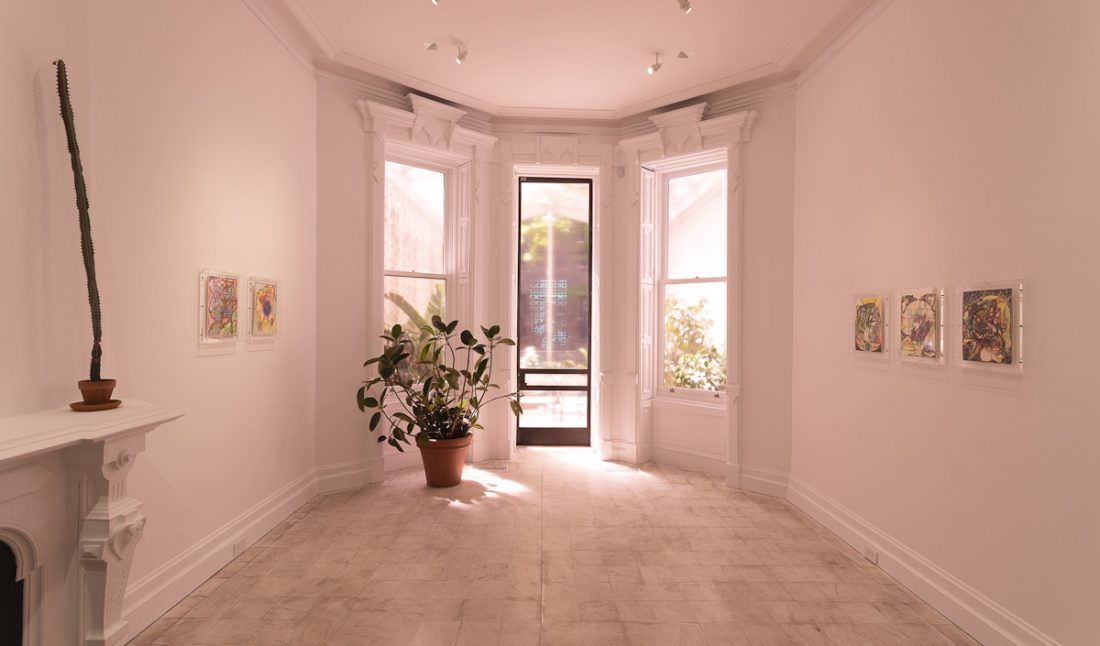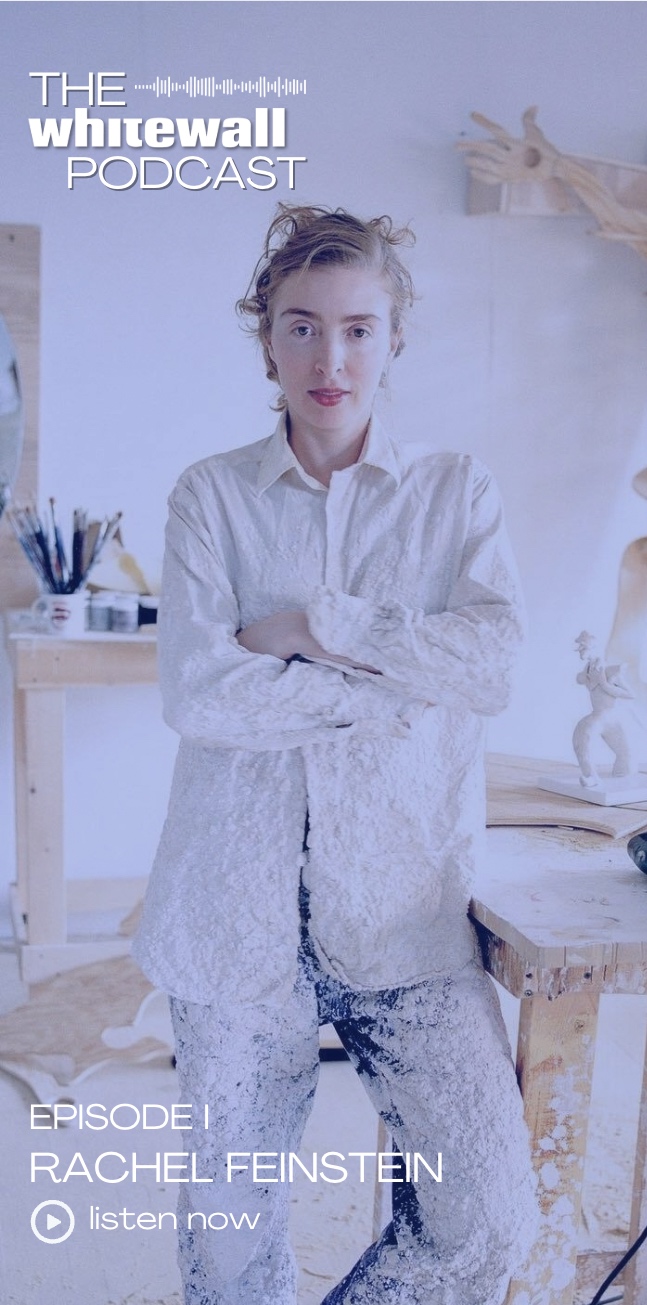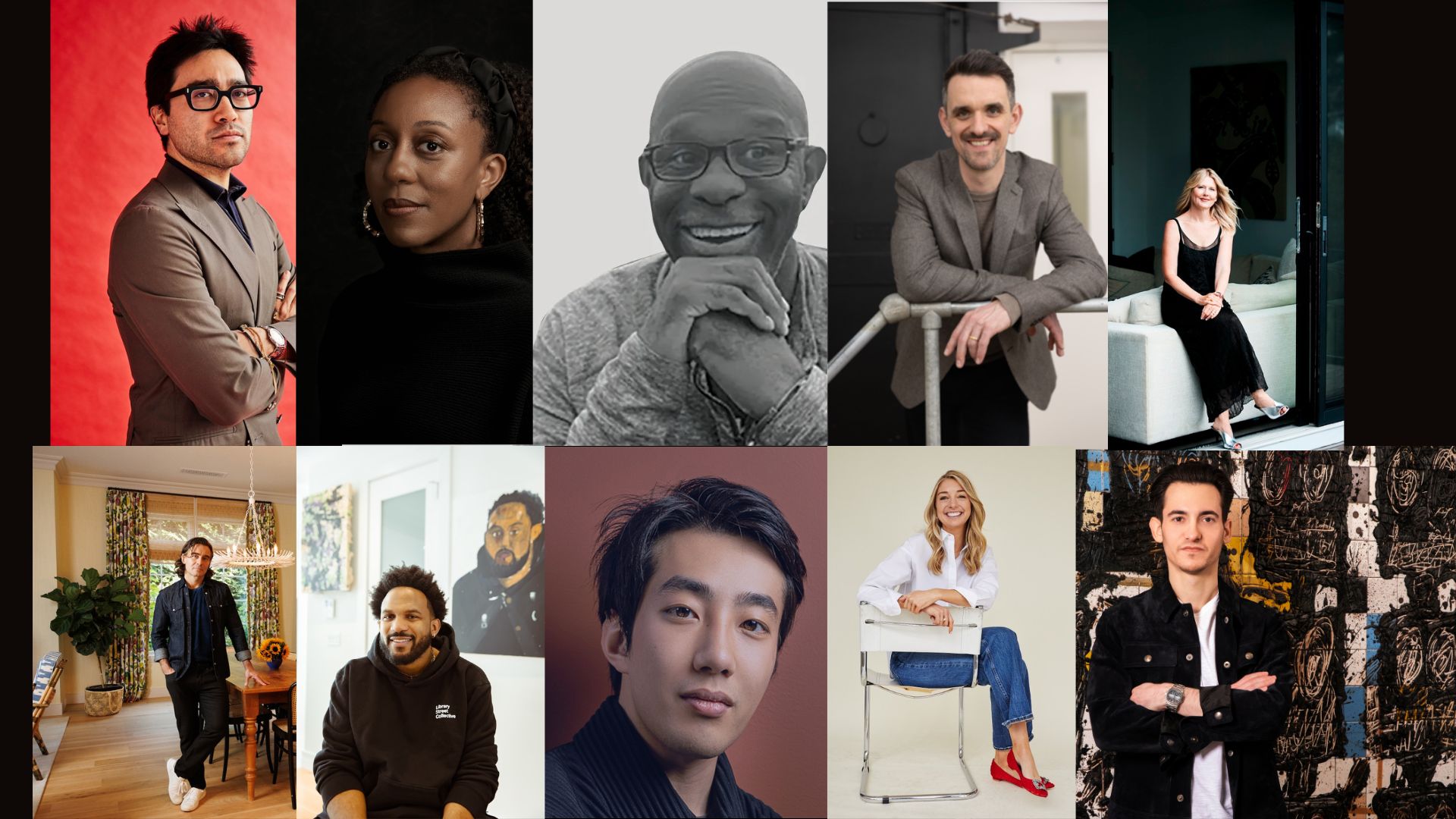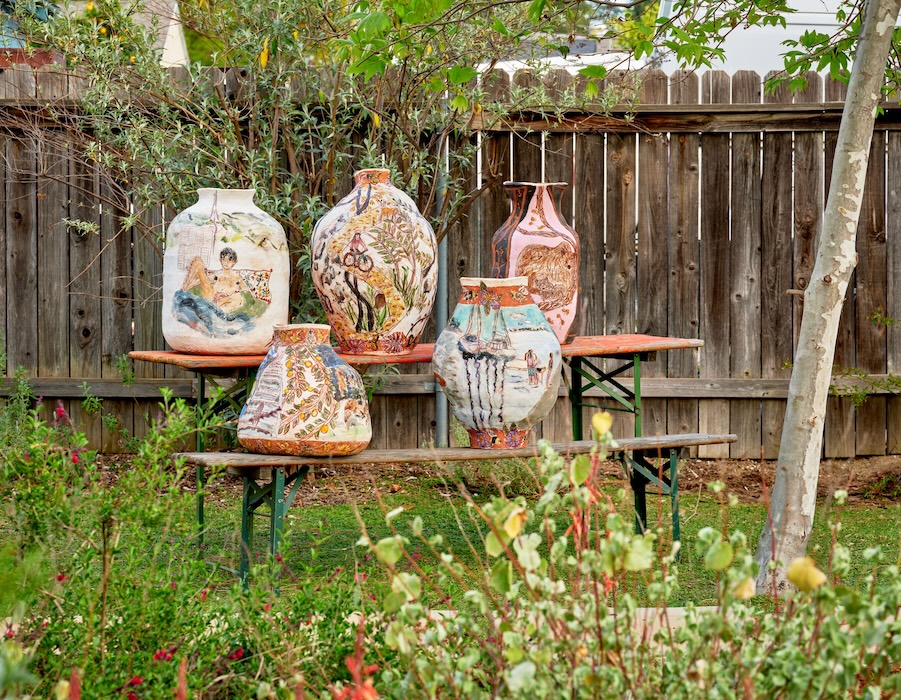In the opening sequence of Agnès Varda’s Cléo 5 à 7 (1962), the camera pans over a table flush with tarot cards. The fortuneteller deals them out in three segments, each row of cards representing the past, present, and future. As a viewer, all you see are the slightly oversized cards, the hands flipping them, and eventually, the cards’s mysterious undersides, rich with illustrations waiting to be deciphered. Kerstin Brätsch’s solo exhibition at Gladstone 64 in New York, “Die Sein: Para-Psychics I,” places you in a similar situation, in which enigmatic visuals seem to interpret your life and fate.
The artist created “Die Sein: Para-Psychics I” during isolation, a time when she was observing the intensity of her inner world. In Gladstone’s long gallery, she has arranged the new series of drawings in various groupings. The works are heavily layered with variegated imagery associated with the cosmos, biology, divination, and the natural world. As an experience, it feels like you are being presented with your own reading and, as a result, that you too are being “read.”
Before “Die Sein: Para-Psychics I” closed over the weekend, Whitewall spoke with Brätsch to learn more about the creative process behind her thought-provoking exhibition. The artist explains how her emotions and observations drew her to this particular concept, as well as material, metaphysical, and fungal influences behind it.
WHITEWALL: To start, I wanted to ask how you began conceiving Die Sein: Para-Psychics? What was the process of working on it like?
KERSTIN BRÄTSCH: The new rhythm forced upon me through the pandemic allowed me to create with a more expansive idea of time. The drawings were made over a long period, two years to be exact, and each drawing functions like a time capsule or a “time collector.” Each drawing is a map of a complete and dense cosmos.
Creating these works furthered my interest in the idea of addressing different registers and aspects of “time” through the creative process. The drawings also act as witnesses to the different conditions of living that I experienced and their energy changes depending on where I was situated. They refer to the pandemic in the sense that I include nothing extra. The drawings are broken down to the essentials: paper and colored pencil.
They accompanied me as I was moving from one place to another in the past two years. I held them close to me like a well-kept diary, and their forms revealing thoughts, emotions and observations like notes in a notebook.
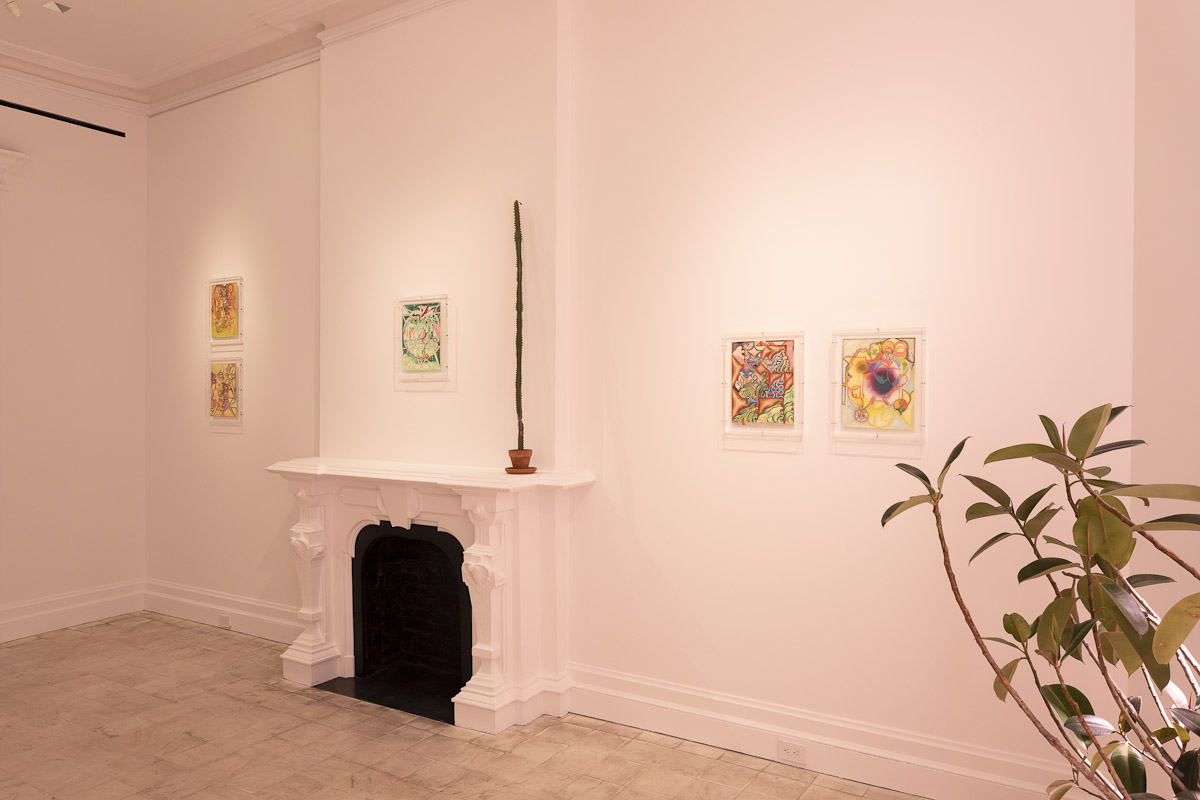 Installation view of Kerstin Brätsch’s “Die Sein: Para Psychics I,” at Gladstone Gallery, New York, 2022, © Kerstin Brätsch, courtesy of the artist and Gladstone Gallery.
Installation view of Kerstin Brätsch’s “Die Sein: Para Psychics I,” at Gladstone Gallery, New York, 2022, © Kerstin Brätsch, courtesy of the artist and Gladstone Gallery.
WW: I know you typically work collaboratively. What was it like to work more solitarily on Die Sein: Para-Psychics? Did isolation change your approach?
KB: Yes, very much so.
As I was starting to create these works, I often thought about Hildegard von Bingen, the High Middle Age German Saint, writer, mystic and visionary. I thought about the time she was receiving visions and wrote them down while enclosed in her cell. I was also reading Silvia Townsend Warner’s The Corner That Held Them, a book about a group of nuns in their run-down convent in England during the Black Death.
Early on in the pandemic, I was severely sick with the flu in my NYC apartment and felt doubly vulnerable because the coronavirus was unfolding outside in the world like an enormous, uncanny entity. It was a very reclusive experience where I was burrowing deeper and deeper inward, like a vortex, and a shift within me occurred. As the outside world started to collapse and my isolation within my small living space intensified, my internal space started to expand. In a feverish trance, this internal space unfolded and opened up like an origami.
The drawings functioned like a clock—they were the only reliable entity in my surroundings and they slowly became a source of connectivity between all the different parts of me.
WW: Can you tell me about using colored pencil? It’s a medium I haven’t seen used in many fine art contexts, and it felt exciting to see it come alive here (especially with all the associations I have / do not have with it)
KB: Paper and colored pencil were the only materials I had access to during lockdown. At the height of the pandemic, my colleague and friend, artist Debo Eilers handed me the last of his black pencil stumps on a street corner in Chinatown.There was a severe lack of drawing material available: black- and primary-colored pencils were on backorder for many months because children were being home schooled.
This shortage in the supply chain also showed the fragility of the capitalist system we have been living in for far too long. The pandemic exposed how easily it would be to disrupt the way of life we are so used to and calls into question the convenience and availability of everything that our current system conditions us to expect.
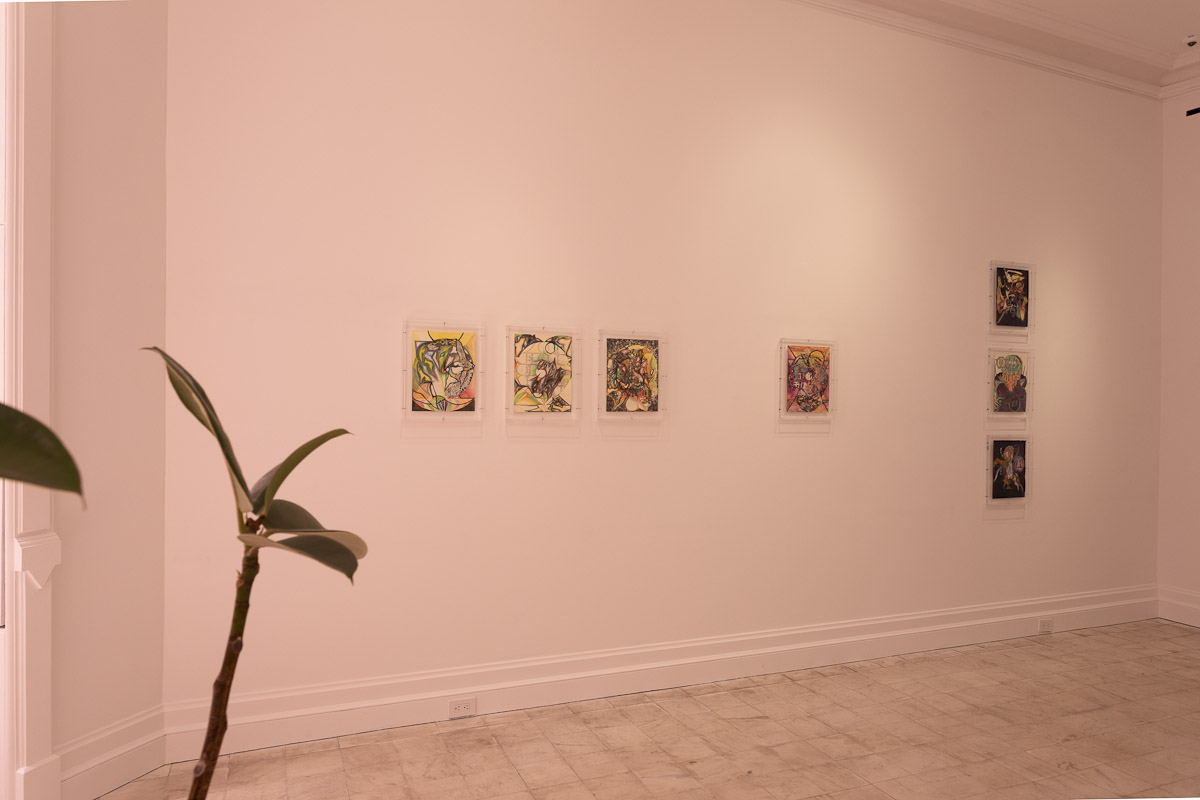 Installation view of Kerstin Brätsch’s “Die Sein: Para Psychics I,” at Gladstone Gallery, New York, 2022, © Kerstin Brätsch, courtesy of the artist and Gladstone Gallery.
Installation view of Kerstin Brätsch’s “Die Sein: Para Psychics I,” at Gladstone Gallery, New York, 2022, © Kerstin Brätsch, courtesy of the artist and Gladstone Gallery.
WW: I know you had been thinking about tarot when you were working on the show, and I wondered if the groupings of works were, in a way, tarot “readings” being presented to the viewer? (It felt like the works were reading me, rather than me reading them.)
KB: Yes correct, the presentation of drawings (groupings) in the exhibition at Gladstone 64 and also at Gio Marconi Milan, are potential daily “readings”. We installed the works onto shelves in the gallery so that they could be moved from wall to wall to form different combinations and readings.
My starting point was reclusive introspection. I originally had the idea of creating my own divination set, such as tarot cards. But the longer I worked on the series, the more I realized it was more the structure of tarot that was of interest to me than the actual tarot set itself.
The Major Arcana tells the arc of the Fool’s Journey to enlightenment, a classic trope in storytelling. My living conditions throughout the pandemic very much influenced what I brought down with pen and paper and each change, move, or chance to housesit for friends created a new dynamic.
Reading Merlin Sheldrake’s “Entangled Life” made me think about fungi culture and their interconnectedness to plant life. I discovered the vast diversity of the fungi world as compared to the plant world. The way in which the mycorrhizal root systems serve as a connecting point for solid media such as rocks and plants, fungi intertwining them with one another. I was inspired by the fact that all recognizable life on land depends on plants and the history of plants is actually the history of the relationship between algae and fungi. Fungi have a very fluid sense of individuality, having no fixed shape or body, but are constantly unfolding themselves by fusing with other networks. They are an example of utter entanglement.
With my drawings I wanted to take the initial inspiration from the structure of the tarot cards and explode it by creating a subterranean logic modeled on a mycelium one. The drawings were made with simultaneity in mind and a frequency where foreground and background merge at all times and exist all at once, where the hierarchy becomes rhizomatic, horizontal, and mushroom like.
In March 2020 I also joined Ariana Reines’ Invisible College, a magical and incredibly soul nourishing Zoom community where we read “Inanna (Queen of Heaven)” together. It is the story of Venus retrograde when Venus ‘shapeshifts’ from the evening star to the morning star. It is the story of death, transformation and rebirth, which we can embody symbolically and metaphorically in our own lives.
The community also introduced me to the work of CAConrad and I was so stricken by their approach to somatic poetry. They describe their work as “poetry that investigates the seemingly infinite space between body and spirit by using nearly any possible thing around or of the body to channel the body out and/or in toward spirit with deliberate and sustained concentration.”
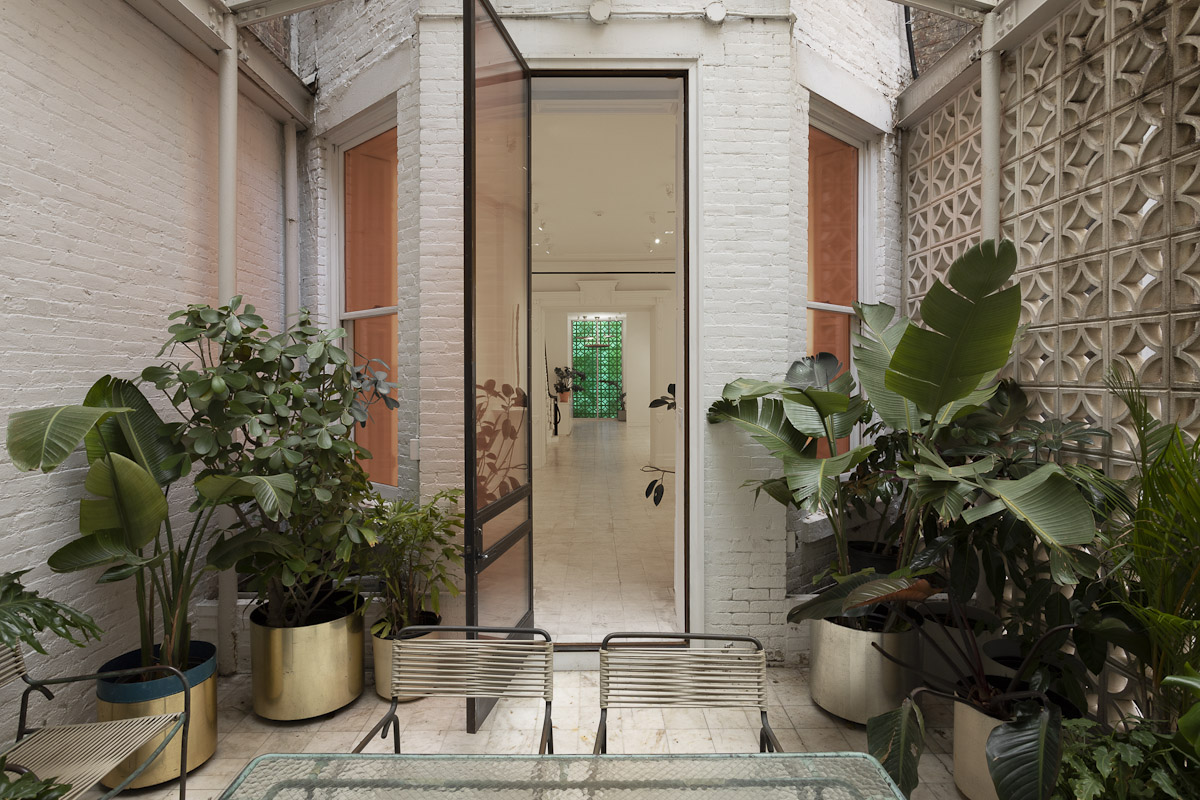 Installation view of Kerstin Brätsch’s “Die Sein: Para Psychics I,” at Gladstone Gallery, New York, 2022, © Kerstin Brätsch, courtesy of the artist and Gladstone Gallery.
Installation view of Kerstin Brätsch’s “Die Sein: Para Psychics I,” at Gladstone Gallery, New York, 2022, © Kerstin Brätsch, courtesy of the artist and Gladstone Gallery.
WW: Seeing your work made me think of Renaissance-era visual culture—astronomical guides, dissections of the human body, religious imagery around crucifixion, incredibly detailed etchings. The Renaissance, for me, is one of the ultimate moments in which people—from all areas of society—were considering how the body should function, religiously, aesthetically, interpersonally. To what extent were you thinking about Die Sein: Para-Psychics as a cross-historical or comparative exploration of these ideas? or were you more interested in considering how these questions deal with this current, very specific moment?
KB: You are right, I was thinking of the Para Psychics as “a cross-historical or comparative exploration of these ideas.”
With my work in general, I try to draw out paintings in relation to the body – be it physical, psychic, psychological, or social. I think about painting as an ever-becoming body. One could say that I am looking at Painting from a quasi-archeological perspective; the drawings being its internal soil samples.
We humans have a capacity to experience this infinite through our body – accessing the gap between a subject and an object, where all these material and metaphysical aspects collapse into each other.
WW: What works, artists, or thinkers were you influenced by when you were creating the series?
KB: I was looking at so many things; Renaissance painters, early world maps, medieval book-prints, gnostic imagery and concepts of the world, indigenous plant medicine and ancient alternative knowledge systems, landscape architecture and gardens, astrological drawings and architectural astronomy instruments or devices, plant life, zombie mushrooms, mimic octopuses, contemporary manga cartoons, and some TV series as well.
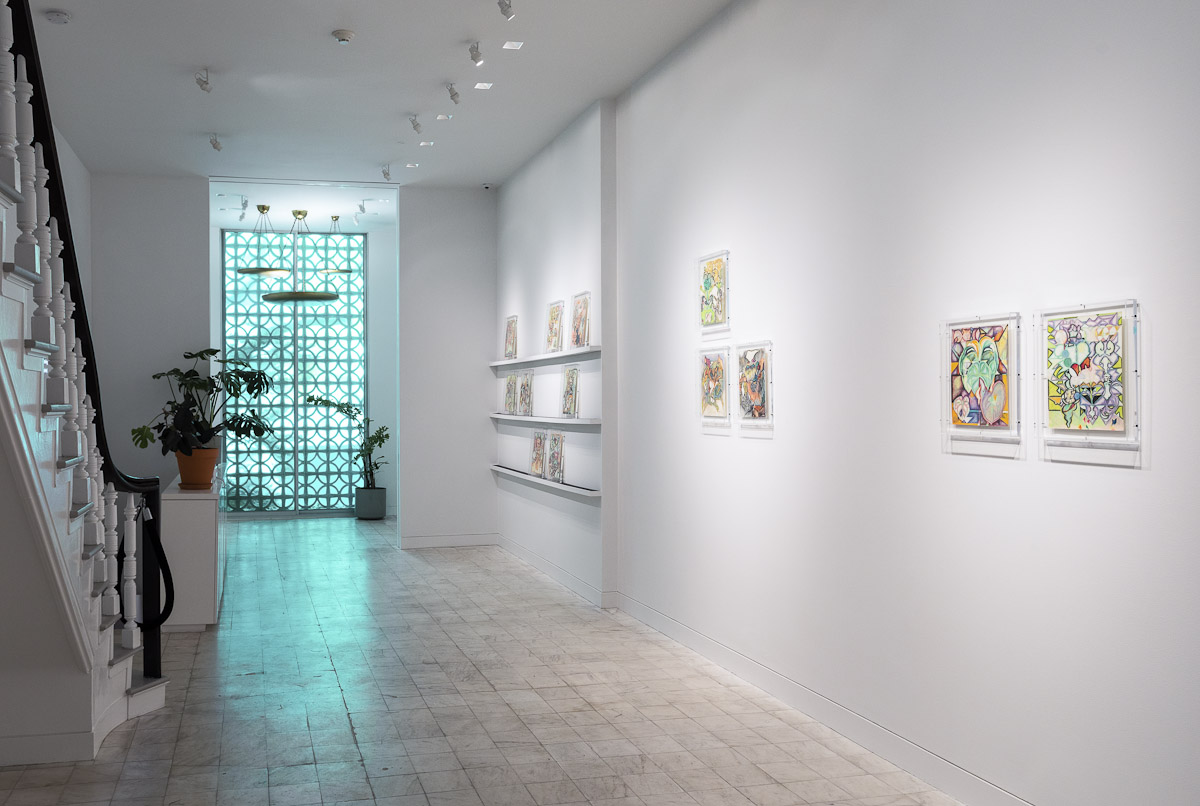 Installation view of Kerstin Brätsch’s “Die Sein: Para Psychics I,” at Gladstone Gallery, New York, 2022, © Kerstin Brätsch, courtesy of the artist and Gladstone Gallery.
Installation view of Kerstin Brätsch’s “Die Sein: Para Psychics I,” at Gladstone Gallery, New York, 2022, © Kerstin Brätsch, courtesy of the artist and Gladstone Gallery.
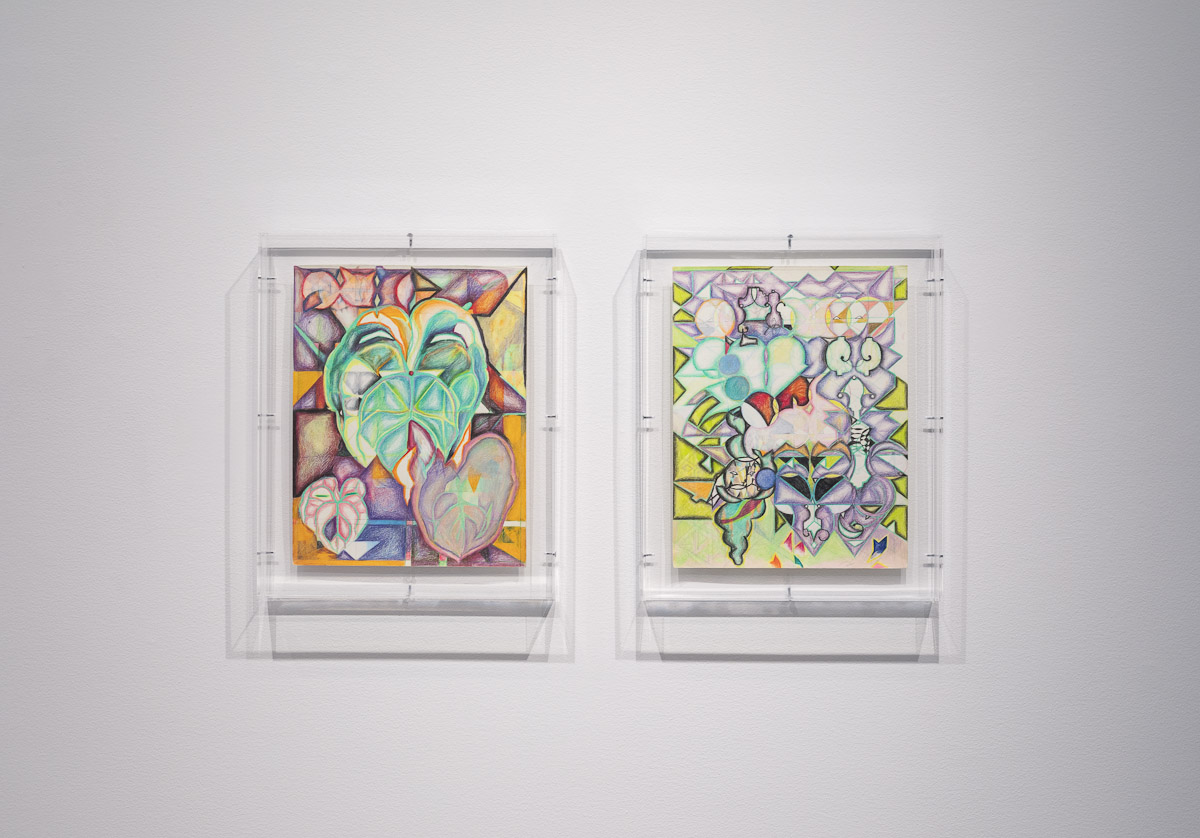 Installation view of Kerstin Brätsch’s “Die Sein: Para Psychics I,” at Gladstone Gallery, New York, 2022, © Kerstin Brätsch, courtesy of the artist and Gladstone Gallery.
Installation view of Kerstin Brätsch’s “Die Sein: Para Psychics I,” at Gladstone Gallery, New York, 2022, © Kerstin Brätsch, courtesy of the artist and Gladstone Gallery.







